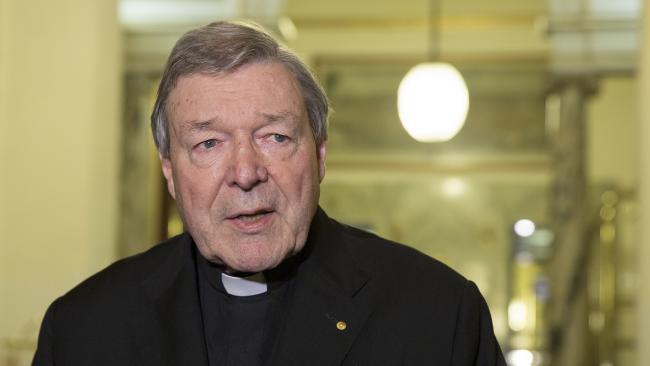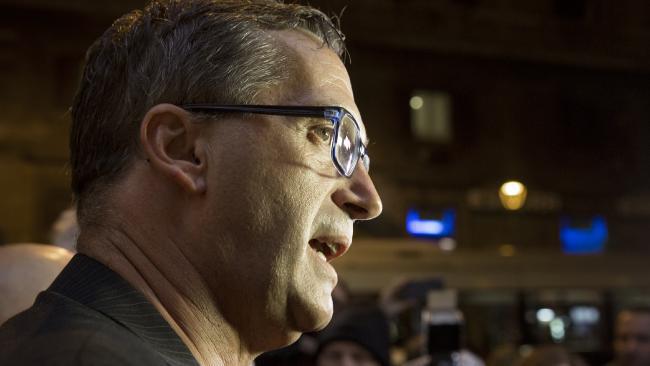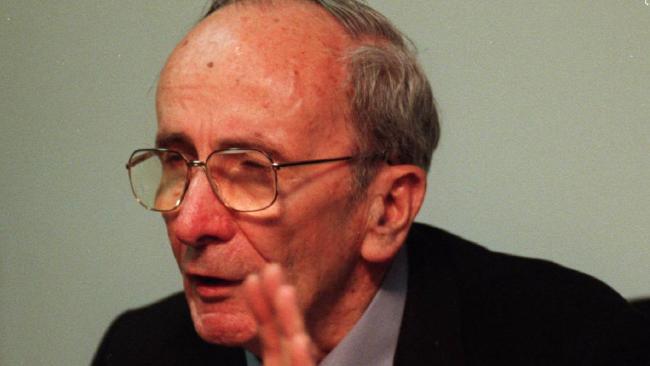|
Andrew Bolt: Evidence against Cardinal George Pell just doesn’t stack up
By Andrew Bolt
[with video] THE media last week missed the big story about Cardinal George Pell, target of the most vicious witch hunt. The case against Pell — that he covered up for paedophile priests — is falling to bits. Last week the royal commission, which grilled Pell for many hours, surprisingly decided to publish the final submissions of its counsel assisting, Gail Furness. I heard Furness go for Pell as he sat in the witness box for four days in March. She treated him with contempt, it seemed to me. Her submissions are not findings — that’s up to the royal commissioners — but do represent Furness’s best case against Pell. To which I say: is this all you’ve got? Is this all anyone can pin on the man who was branded “scum” in the Tim Minchin song played on high rotation by the ABC? Who was attacked in the media as a “liar”, “sociopath”, “coward” and “dangerous individual”? Furness concedes many of the most repeated allegations against Pell don’t stand up. Remember one victim, David Ridsdale, claiming Pell tried to bribe him to stop him telling police he’d been abused by his uncle, notorious paedophile priest Gerald Ridsdale? David Ridsdale testified Pell had asked him in 1993 “what would it take” to keep quiet. “I remember saying to both my sisters, ‘the bastard just tried to bribe me’.” Ridsdale told this story to journalist David Marr, a leading persecutor of Pell. He told it to 60 Minutes and the ABC and became the de facto spokesman for victims in Ballarat. I don’t doubt he believed it. Nor does Furness, but her submission, co-authored by Stephen Free, says the evidence does not back him up. Yes, Pell offered to help the distraught family friend. But “given Mr Ridsdale … expressed a desire to Bishop Pell for a private process, it is not likely that Bishop Pell would then have thought it necessary to offer Mr Ridsdale an inducement to prevent him from going to the police”. Besides, Pell knew Ridsdale had already spoken to police. Furness also casts doubt on other allegations promoted by journalists. For instance, one witness said he’d gone to Pell’s presbytery in Ballarat one weekday to warn about a paedophile priest, but Pell had chased him away. (Almost no journalist revealed this witness was himself later jailed for abusing children.) Furness concludes this claim “cannot be resolved”, since Pell was not living at that presbytery and at that time of day was probably at work. She also casts doubt on a third claim, which made headlines in the Sydney Morning Herald and on the ABC. One witness said he’d overheard Pell joke about Gerald Ridsdale with a fellow priest at a funeral mass in Ballarat, saying “Haha I think Gerry’s been rooting boys again”. In fact, says Furness, there was no such mass on the date the witness gave and the priest Pell allegedly joked with was then living in Horsham and denied Pell would say such a thing anyway. Furness does not even trouble to mention another false claim — that in 1969 Pell heard an abused boy plead for help but did nothing. Pell’s passport shows he actually lived in Rome that year. So what remains of the case against Pell? Furness is left with just three main charges — and none involve Pell actively protecting paedophiles. Furness’s first allegation is that Pell was warned by a schoolboy of abuse at Ballarat’s St Patrick’s College: “The evidence establishes that in or around late 1974, (Timothy) Green was in the changing room at the Eureka Swimming Pool in Ballarat with two friends when Father Pell walked in. “Mr Green said to Father Pell … ‘Brother Dowlan is touching little boys’. Father Pell said, ‘Don’t be ridiculous’ and walked out.” In fact, Pell denies hearing that warning. So does Green’s surviving friend, who Green claimed had nodded in agreement. Curiously, even though Furness suggests Pell brushed off Green’s warning, she accepts he still raised rumours about Dowlan with the chaplain of St Patrick’s. Pell, who was not on the school’s staff or of the Christian Brothers order which ran it, said he was told the “Brothers have got the matter in hand” and Dowlan was soon gone. He wrongly assumed Dowlan had been dealt with, but Furness concludes: “Pell should have … ensured that the matter was dealt with properly.” That seems a harsh judgment. Furness’s second claim is that Pell, as one of the consultors to Ronald Mulkearns, Bishop of Ballarat, should have figured out his boss was protecting Gerald Ridsdale. Pell, then preoccupied as director of the Aquinas campus and principal of the Institute of Catholic Education, insists Mulkearns hid from him the real reasons Ridsdale was moved from parish to parish. Furness does not produce any proof that Pell lied, or point to a single case where he was told of Ridsdale raping children. She instead infers he must have realised Ridsdale was a paedophile preying on children after learning that Ridsdale went to New Mexico in 1989 for treatment. Pell says he thought that treatment was for homosexuality. Furness suggests, without saying why, he knew it was for paedophilia and should have made the connection. BUT note how many people knew much more than Pell and did nothing — starting with the police who investigated Ridsdale for abusing even the sons of one officer, yet unaccountably dropped the case. Finally, there’s Furness’s third allegation: that Pell as an Auxilliary Bishop in Melbourne should have done more to get rid of priest Peter Searson, a misfit and, it turned out, paedophile priest. Says Furness: “Pell knew of the matters raised in relation to Searson by teachers in 1989, which included a ‘non-specific’ allegation of sexual misconduct.” Note “non-specific”. All that those teachers told Pell of “sexual misconduct” was that Searson was seen too often in the boy’s toilets. Searson claimed he was just cracking down on graffiti and even his fellow teachers said they did not want him sacked. Pell simply did not know all Searson was up to and Furness agrees the Catholic Education Office which actually employed the priest “did not … effectively communicate their views that Searson posed a risk to children”. Moreover, Pell’s boss, Archbishop Frank Little, who protected Searson, did not tell Pell all the allegations against him. Nor does Furness claim he did. Again, the police failed worse: they investigated complaints that Searson molested one girl and held a knife to the chest of another, but both times failed to prosecute. Pell insists he was kept out of the loop by Little, who knew the reforming Pope John Paul II wanted him to take over. Sure enough, Pell did finally replace Little and within 100 days set up the country’s first real response to child sexual abuse and started to clean out the paedophile priests, starting with Searson. It’s odd that Furness barely mentions that. And it’s shocking that so many journalists refuse to give him credit, preferring this conservative’s blood to the truth.
|
.
Any original material on these pages is copyright © BishopAccountability.org 2004. Reproduce freely with attribution.


